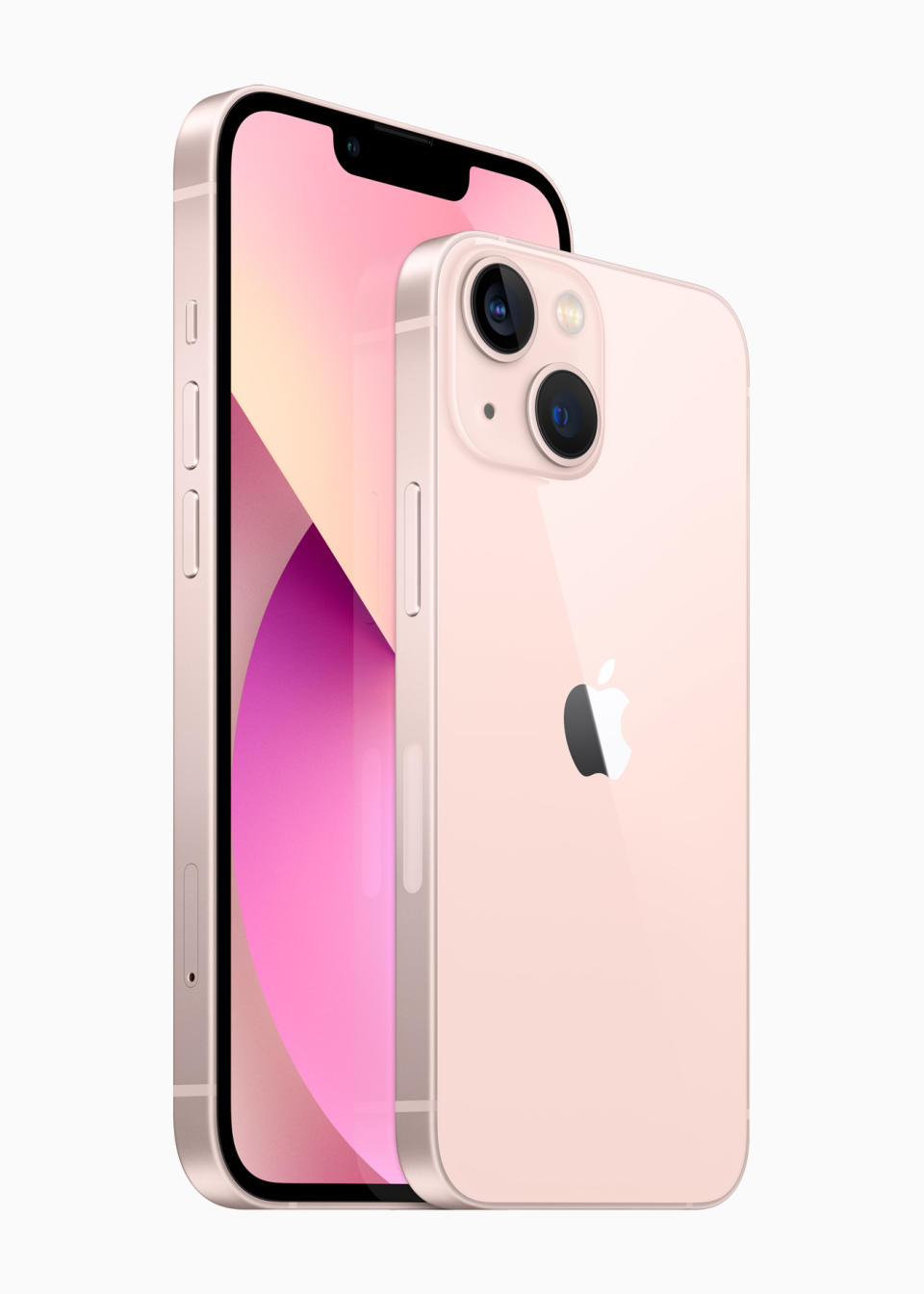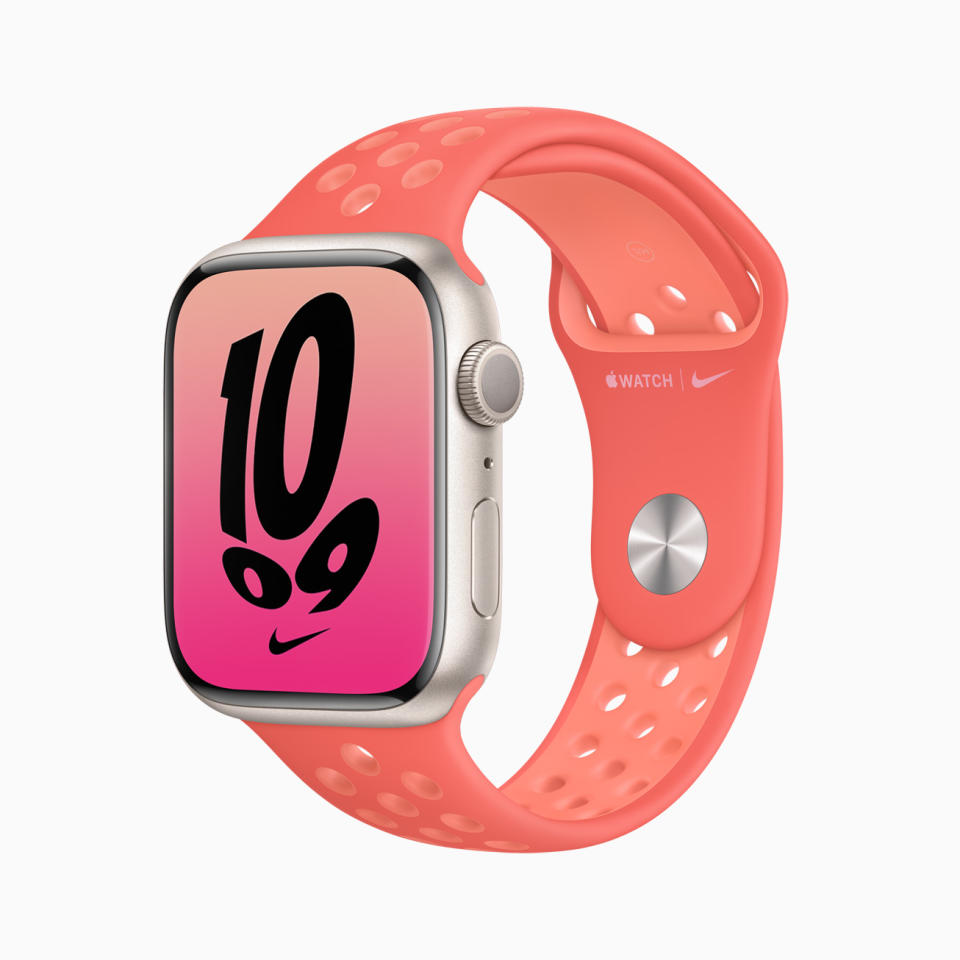Apple Event: Makeovers Not on Menu for New iPhone, Watch

The subtle aesthetic changes in Apple’s latest collection of iPhones, iPads and Watch hold no carrot for a fashion set that craves newness. But the company, which held its virtual “California streaming” product announcement on Tuesday, is betting that its beefy camera upgrades and other under-the-hood improvements will keep its smartphones in high demand.
The most obvious change to the iPhone 13 and 13 Mini is a slightly smaller notch on the top of the display and some tweaking to the rear cameras, including a new diagonal positioning that replaces their vertically stacked array.
More from WWD
The iPhone 13 Pro and larger Pro Max, outfitted now with a Super Retina XDR display, comes in a new Sierra Blue color option. According to Greg Joswiak, Apple’s senior vice president of worldwide marketing, the new blue finish required “multiple layers of nanometer-scale metallic ceramics applied across the surface.”
These 5G phones boast Apple’s A15 bionic chip, which promises better performance and longer battery life. It also factors into some of the iPhones’ new camera tricks, which may be their biggest selling point. Improved photography from the 12-megapixel ultra-wide cameras performs better in low-light or night-time situations. Budding filmmakers may enjoy a new cinematic mode that can hold focus on the subject, wherever they move.
“Focus transitions happen automatically in real time, like from one subject to another,” explained Johnnie Manzari, a human interface designer with Apple. “Cinematic mode anticipates when a subject is about to enter the frame and intelligently racks focus to them when they do. And when a subject gazes away from the camera, iPhone itself changes focus, and then back.”
This is the sort of shooting style used by filmmakers like Kathryn Bigelow and Greig Fraser, both of whom appear in promotional videos shooting with the iPhone 13 Pro. A standout aspect of this feature is that the user can change the focus even after shooting.
The software also allows for “Smart HDR Four” — which improves color contrast and lighting, as well as skin tones — and offers preset photography styles, so users can determine a visual style to apply to all of their photos.
“Select from one of our four default styles before you shoot, for example, rich contrast for a bolder look or vibrant for a punchier look,” said Rebecca Pujols, image quality engineer. “Each uses our deep semantic understanding to intelligently apply the right amount of adjustments to different parts of the photo while preserving skin tones. You can also customize the styles further with tone and warmth, which combined multiple attributes for a look that’s all your own.
“Styles works across scenes and subject types. You don’t need to set it every time. So you can define your style and use it across your photos,” she added.
Considering the growing priority on video these days, users — particularly those who increasingly make their living from YouTube or other channels — could find the updates very appealing. Both the iPhone 13 Pro and iPhone 13 Pro Max also feature a new 77-millimeter telephoto camera, adding more zoom capability for videographers.
Apple promised another feature for later this year called ProRes, which captures at recordings up to 4K and 30 frames per second, along with more efficient encoding, for professional-level video editing in software like Final Cut Pro.
To house all of that, the devices will need ample storage, and indeed all of the new iPhones come with 128 GB as a minimum storage capacity.
Orders begin on Sep. 17 for the iPhone 13 (13-inch, $799), 13 Mini (5.4-inch, $699), iPhone 13 Pro (6.1-inch, $999) and Pro Max (6.7-inch, $1,099) with availability on Sept. 24.

Courtesy images
The iPad was updated to include Apple’s A13 bionic chip, 12-megapixel ultra-wide front camera with Center Stage, a machine learning feature that automatically keeps the subject of FaceTime calls in the frame. The iPad Mini arguably received better updates, with an all-screen design featuring a better, brighter display, faster performance due to the new A15 chip, new cameras and Center Stage feature.
As for the Apple Watch Series 7, rumors that the wrist gizmo would morph to a flatter, sharper look missed the mark. The new wearable keeps the same rounded corners and case size — a relief, perhaps, to any owners who want to stick with their existing watch band collection.
What changed, then, was that Apple managed to work in a 20 percent larger display into roughly the same size device. To accommodate this, it shrank the borders 40 percent, according to chief operating officer Jeff Williams. The result can fit 50 percent more text on the screen than its predecessor. It also includes a new way to type that can better predict what people want to say.
Regarding fitness, the new Watch adds new bike riding features that can detect when the ride begins, fall detection for accidental spills and support for e-bikes and some winter sports, like snowboarding. There’s also a new mindfulness app, which sounds nice and peaceful. But make no mistake: Apple wants users to take this out on every adventure. Toward that end, it touts the Series 7 as its most durable Apple Watch yet, with crack resistance, IP6X certification and WR50 water resistance.
As for the battery, longevity didn’t change, unfortunately — Apple still promises 18 hours of battery life. But the company promised 33 percent faster charging over the Series 6, and that supposedly eight minutes of charge time is sufficient for eight hours of sleep tracking.
New colors join the collection, amounting to a broader range that includes midnight, starlight, green, blue and red, plus silver, graphite and gold stainless steel or natural in space black titanium. Longtime fashion partners Hermés and Nike, of course, offer new exclusive bands to go with them.

Courtesy images

Courtesy image
For some reason, the company is still offering the Apple Watch Series 3 as its lowest price point, at $199, with the SE version going for $279 and the Series 7, when it arrives later this fall, will cost $399.
Apple’s iPhone sales swelled last year, culminating in a fourth quarter that snared $65.6 billion in revenue from the handset alone. Sales have slowed since then, due at least in part to chip shortages. But it’s clear that there is an enormous number of people invested in the iOS ecosystem, as they use their phones increasingly to shop, entertain themselves and even make a living or rely on their watches to stay healthy, especially during a period when health matters more than ever.
So while people who hoped for a major makeover in their Apple devices may be disappointed, early adopters — and certainly camera fanatics and Watch-clad fitness enthusiasts — may still find the upgrades worthwhile.
Sign up for WWD's Newsletter. For the latest news, follow us on Twitter, Facebook, and Instagram.

